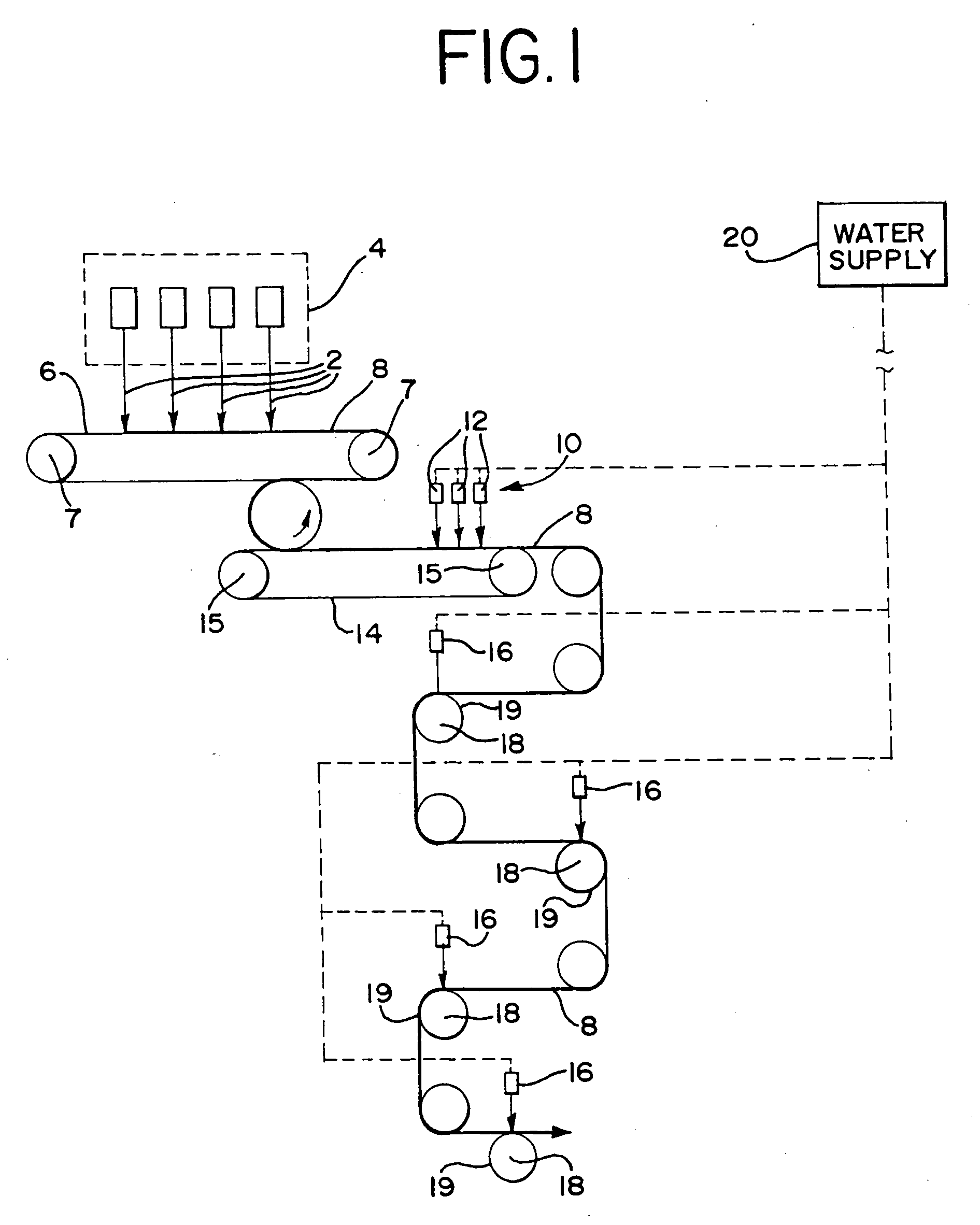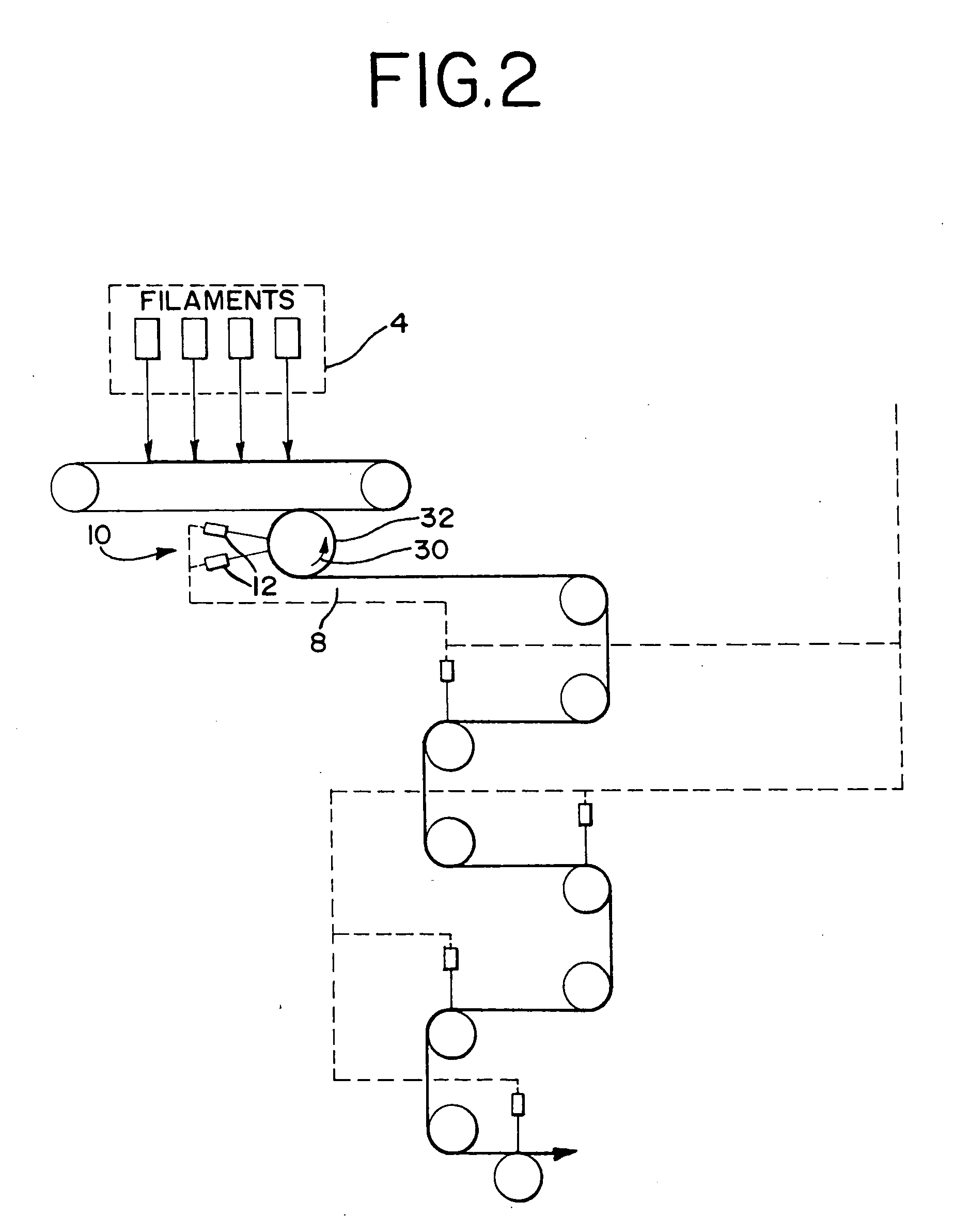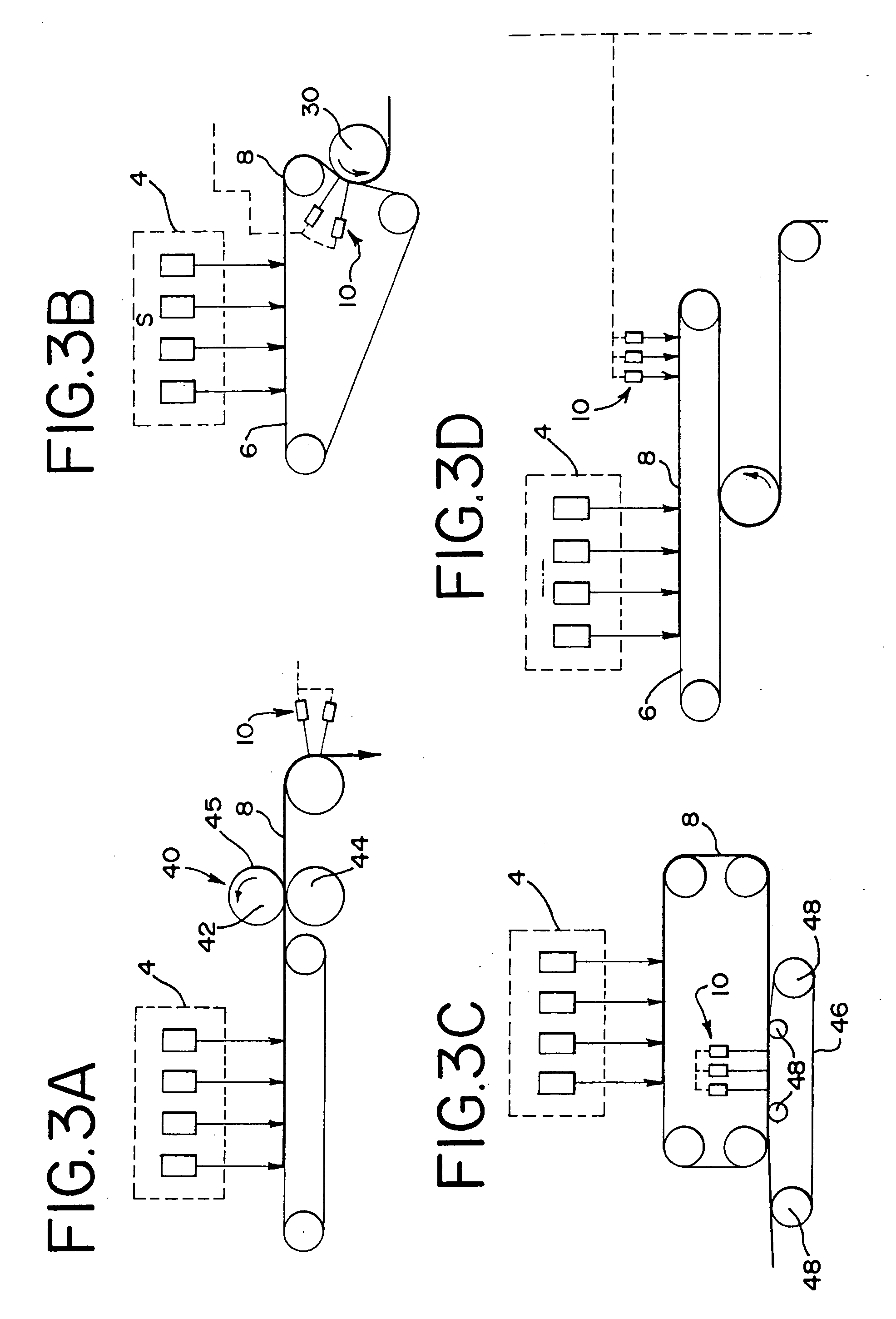Hydroentanglement of continuous polymer filaments
a polymer filament and continuous technology, applied in weaving, lighting and heating apparatus, drying machines with progressive movements, etc., can solve the problems of increasing the associated effort and cost, increasing the cost and effort of the process, and reducing the tensile strength of the filament, so as to achieve the effect of diffusing the bonding temperatur
- Summary
- Abstract
- Description
- Claims
- Application Information
AI Technical Summary
Benefits of technology
Problems solved by technology
Method used
Image
Examples
example 1
[0122] A hydroentangling apparatus configured in accordance with the present disclosure included entangling manifolds having orifice jets each 0.0059 inches in diameter, spaced at 33.33 per inch along the length of the manifold. A 20×20 three-dimensional image transfer device was employed. A 17 g / m2, 1.7 denier polypropylene filament web, and a nominal 27 g / m2, nominally 3.5 denier polyethylene web were combined at a processing speed of 40 feet per minute. Entangling treatments consisted of three rows of orifices directed against the two precursor webs on one side of the webs. The entangling pressure of the three entangling manifolds of the apparatus were successively provided at 600, 2,000, and 3,000 psi for the orifice jets. Total energy input was 1.8 horsepower-hour / pound.
[0123] It is contemplated that the process of the present invention for manufacture of laminated nonwoven fabric can be practiced in different ways. The fabric can be produced by providing precursor webs which ...
PUM
| Property | Measurement | Unit |
|---|---|---|
| pressure | aaaaa | aaaaa |
| pressure | aaaaa | aaaaa |
| pressure | aaaaa | aaaaa |
Abstract
Description
Claims
Application Information
 Login to View More
Login to View More - R&D
- Intellectual Property
- Life Sciences
- Materials
- Tech Scout
- Unparalleled Data Quality
- Higher Quality Content
- 60% Fewer Hallucinations
Browse by: Latest US Patents, China's latest patents, Technical Efficacy Thesaurus, Application Domain, Technology Topic, Popular Technical Reports.
© 2025 PatSnap. All rights reserved.Legal|Privacy policy|Modern Slavery Act Transparency Statement|Sitemap|About US| Contact US: help@patsnap.com



